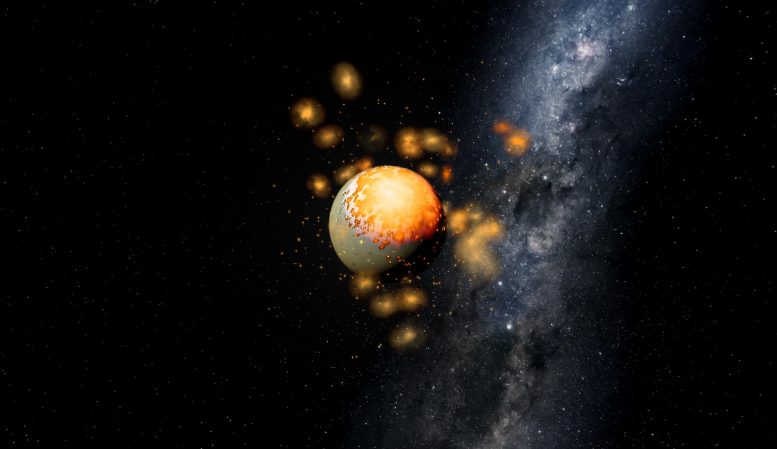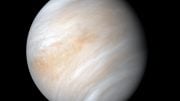
An SwRI-led team compared the early impact history of Venus and Earth, determining that Venus experienced higher-energy impacts creating a superheated core. Models show these conditions could create Venus’ extended volcanism and younger surface. Credit: Southwest Research Institute
Models show Venus’ superheated core could produce extended volcanism and long-lived resurfacing.
A Southwest Research Institute-led team has modeled the early impact history of Venus to explain how Earth’s sister planet has maintained a youthful surface despite lacking plate tectonics. Through a comparison of the early collision histories of Earth and Venus, it’s believed that Venus experienced more high-speed, high-energy impacts. These impacts led to the formation of a superheated core, triggering prolonged volcanism and resurfacing of the planet.
Understanding Inner Planetary Differences
“One of the mysteries of the inner solar system is that, despite their similar size and bulk density, Earth and Venus operate in strikingly distinct ways, particularly affecting the processes that move materials through a planet,” said Dr. Simone Marchi, lead author of a new paper about these findings in Nature Astronomy.
A Southwest Research Institute-led team has modeled the early impact history of Venus to explain how Earth’s sister planet has maintained a youthful surface despite lacking plate tectonics. The new model suggests that the planets’ distances from the Sun resulted in higher-energy, higher-velocity impacts to Venus. These powerful collisions created a superheated core that promoted extended, extensive volcanism and resurfaced the planet. Credit: Southwest Research Institute
Plate Tectonics and Volcanism on Venus and Earth
The Earth’s shifting plates continuously reshape its surface as chunks of the crust collide to form mountain ranges, and in places promote volcanism. Venus has more volcanos than any other planet in the solar system but has only one continuous plate for its surface. More than 80,000 volcanos — 60 times more than Earth — have played a major role in renewing the planet’s surface through floods of lava, which may continue to this day. Previous simulations struggled to create scenarios to support this level of volcanism.
Early Collision and Volcanism
“Our latest models show that long-lived volcanism driven by early, energetic collisions on Venus offers a compelling explanation for its young surface age,” said Professor Jun Korenaga, a co-author from Yale University. “This massive volcanic activity is fueled by a superheated core, resulting in vigorous internal melting.”
This high-resolution (1 million particles) computer simulation illustrates an 1,800-mile-diameter (3,000-kilometer) projectile striking Venus head-on at 18 miles per second (30 km/s). On the left, the colors indicate different materials — brown for Venus’ core; white for the projectile’s core; and green for the silicate mantle of both objects. The colors on the right side indicate the temperature of the materials. Credit: Southwest Research Institute
Planetary Formations and Impact Histories
Earth and Venus formed in the same neighborhood of the solar system as solid materials collided with each other and gradually combined to form the two rocky planets. The slight differences in the planets’ distances from the Sun changed their impact histories, particularly the number and outcome of these events. These differences arise because Venus is closer to the Sun and moves faster around it, energizing impact conditions. In addition, the tail of collisional growth is typically dominated by impactors originating from beyond Earth’s orbit that require higher orbital eccentricities to collide with Venus rather than Earth, resulting in more powerful impacts.
Internal Conditions of Venus
“Higher impact velocities melt more silicate, melting as much as 82% of Venus’ mantle,” said Dr. Raluca Rufu, a Sagan Fellow and SwRI co-author. “This produces a mixed mantle of molten materials redistributed globally and a superheated core.”
If impacts on Venus had significantly higher velocity than on Earth, a few large impacts could have had drastically different outcomes, with important implications for the subsequent geophysical evolution. The multidisciplinary team combined expertise in large-scale collision modeling and geodynamic processes to assess the consequences of those collisions for the long-term evolution of Venus.
Implications for Future Studies
“Venus’ internal conditions are not well known, and before considering the role of energetic impacts, geodynamical models required special conditions to achieve the massive volcanism we see at Venus,” Korenaga said. “Once you input energetic impact scenarios into the model, it easily comes up with the extensive and extended volcanism without really tweaking the parameters.”
And the timing of this new explanation is serendipitous. In 2021, NASA committed to two new Venus missions, VERITAS and DAVINCI, while the European Space Agency (ESA) is planning one called EnVision.
“Interest in Venus is high right now,” Marchi said. “These findings will have synergy with the upcoming missions, and the mission data could help confirm the findings.”
Reference: “Long-lived volcanic resurfacing of Venus driven by early collisions” by Simone Marchi, Raluca Rufu and Jun Korenaga, 20 July 2023, Nature Astronomy.
DOI: 10.1038/s41550-023-02037-2







Be the first to comment on "Planet Resurfacing: Venus Volcanism Could Have Been Fueled by Ancient, High-Energy Impacts"